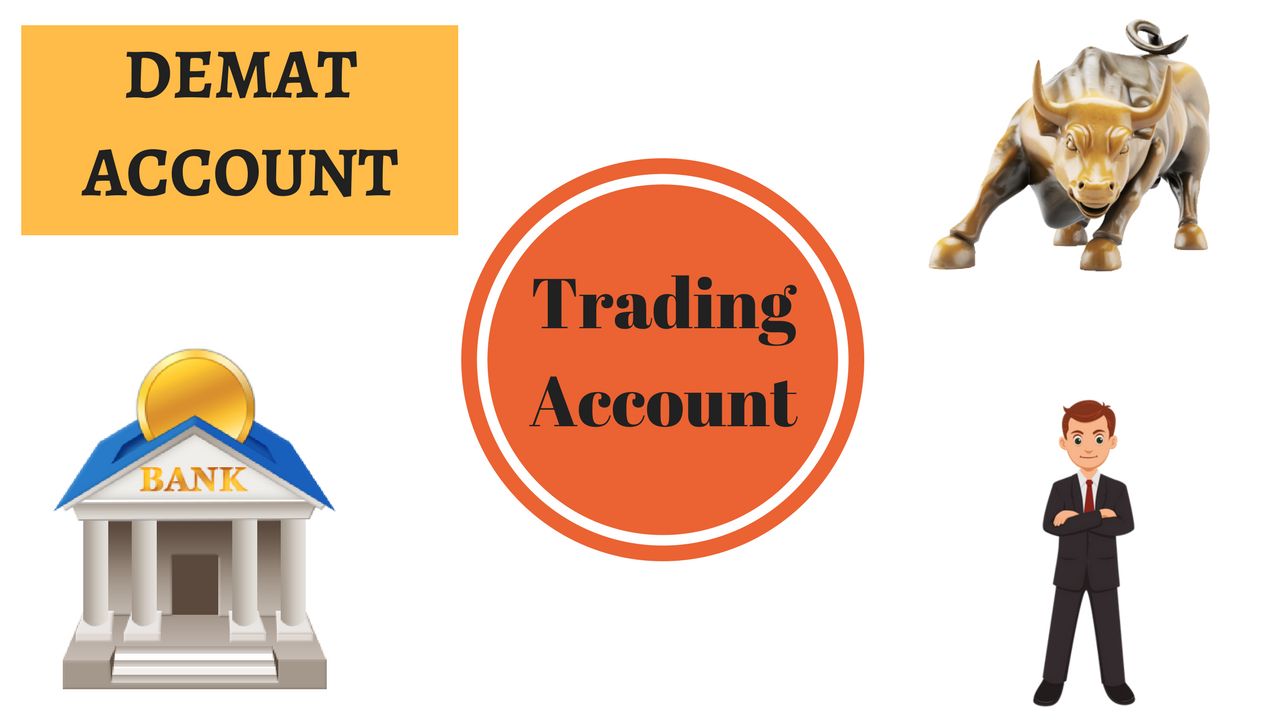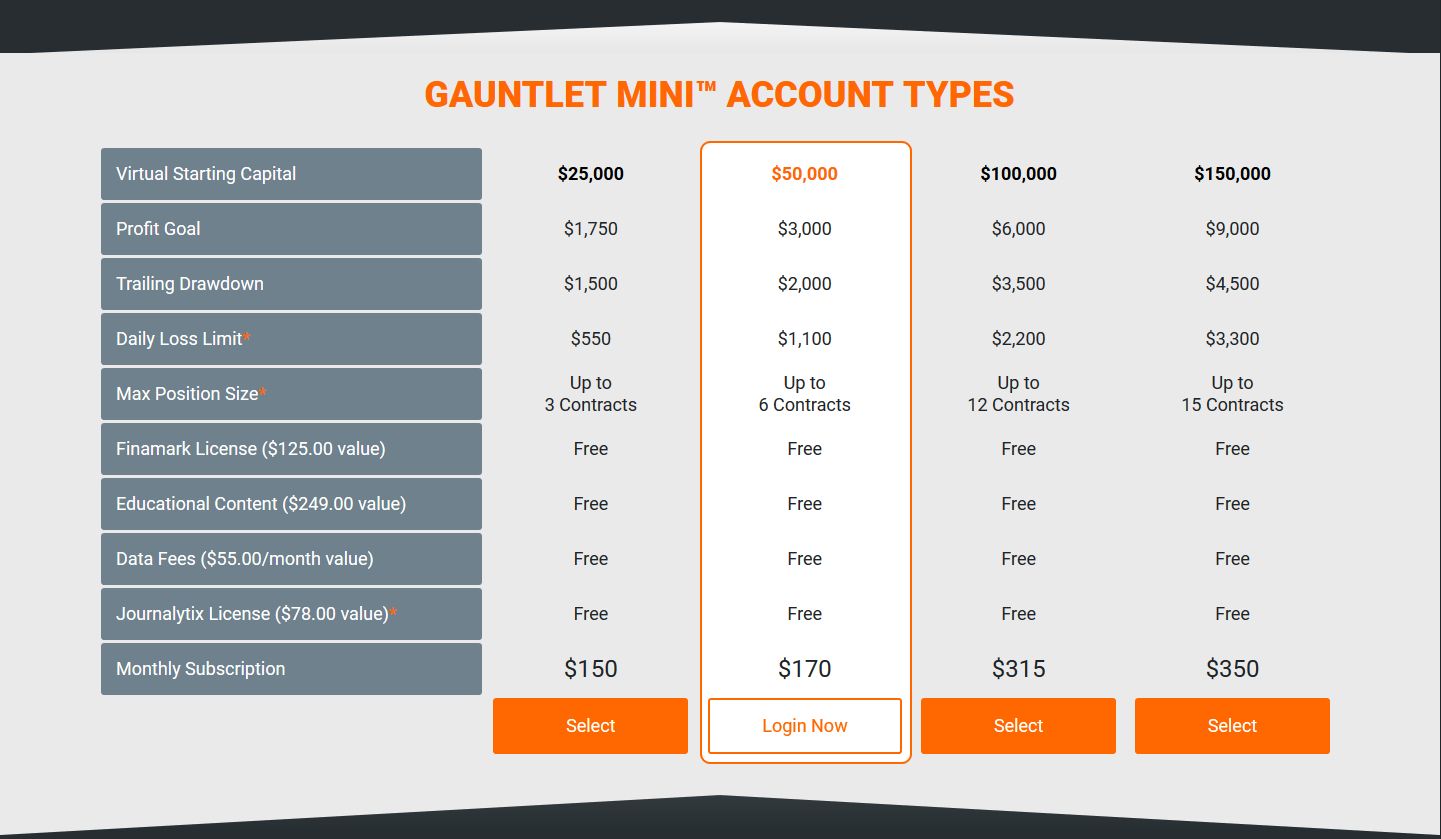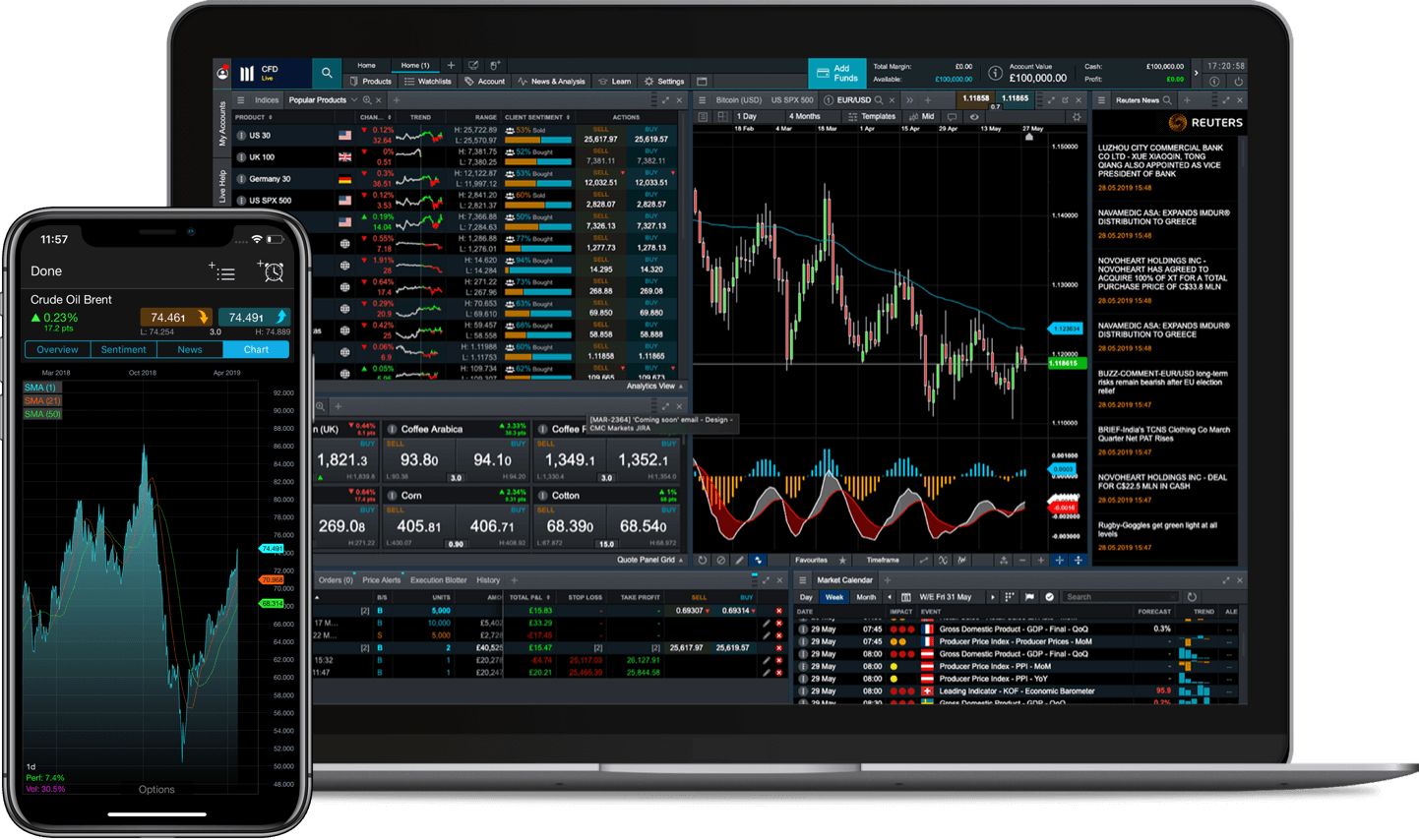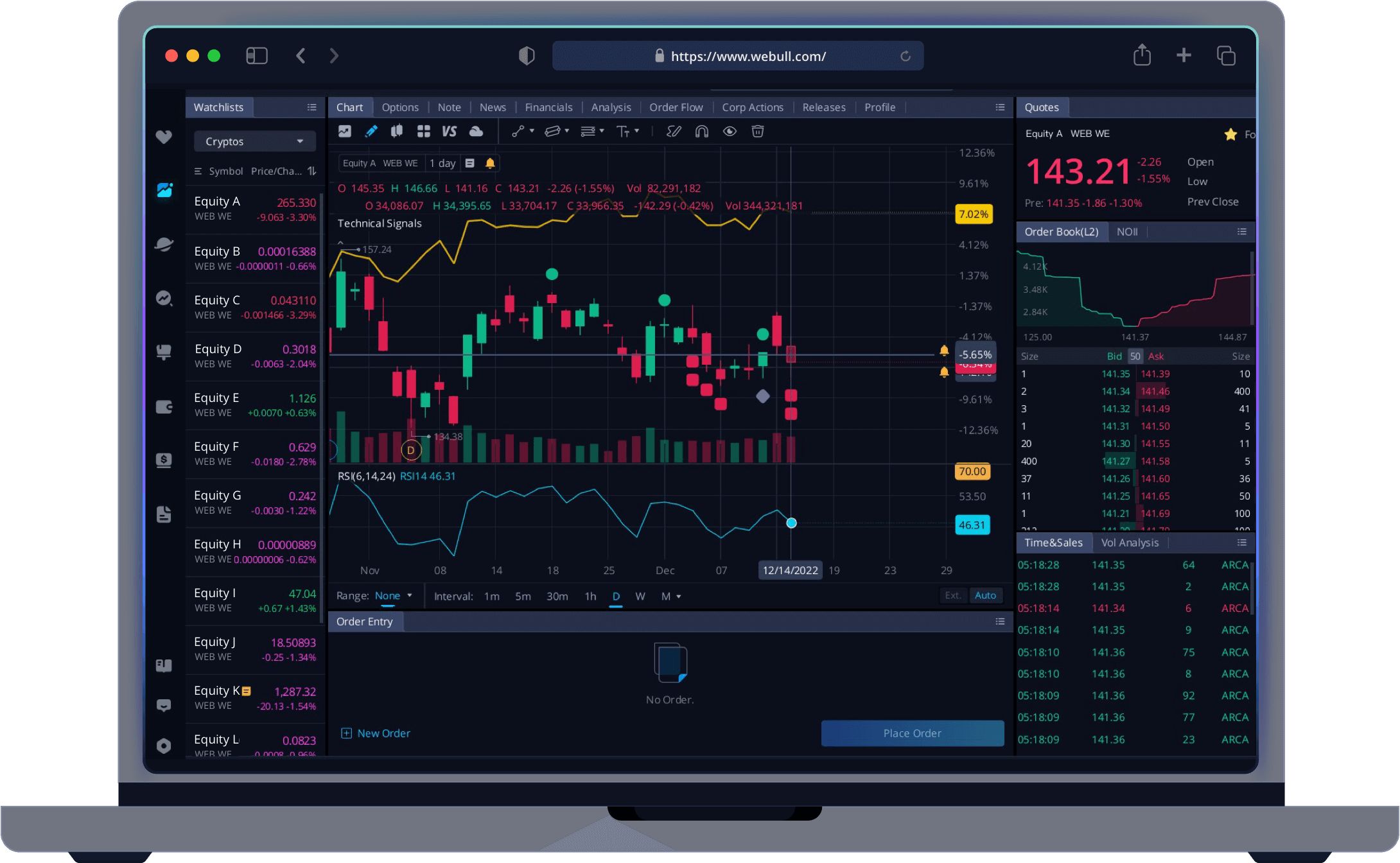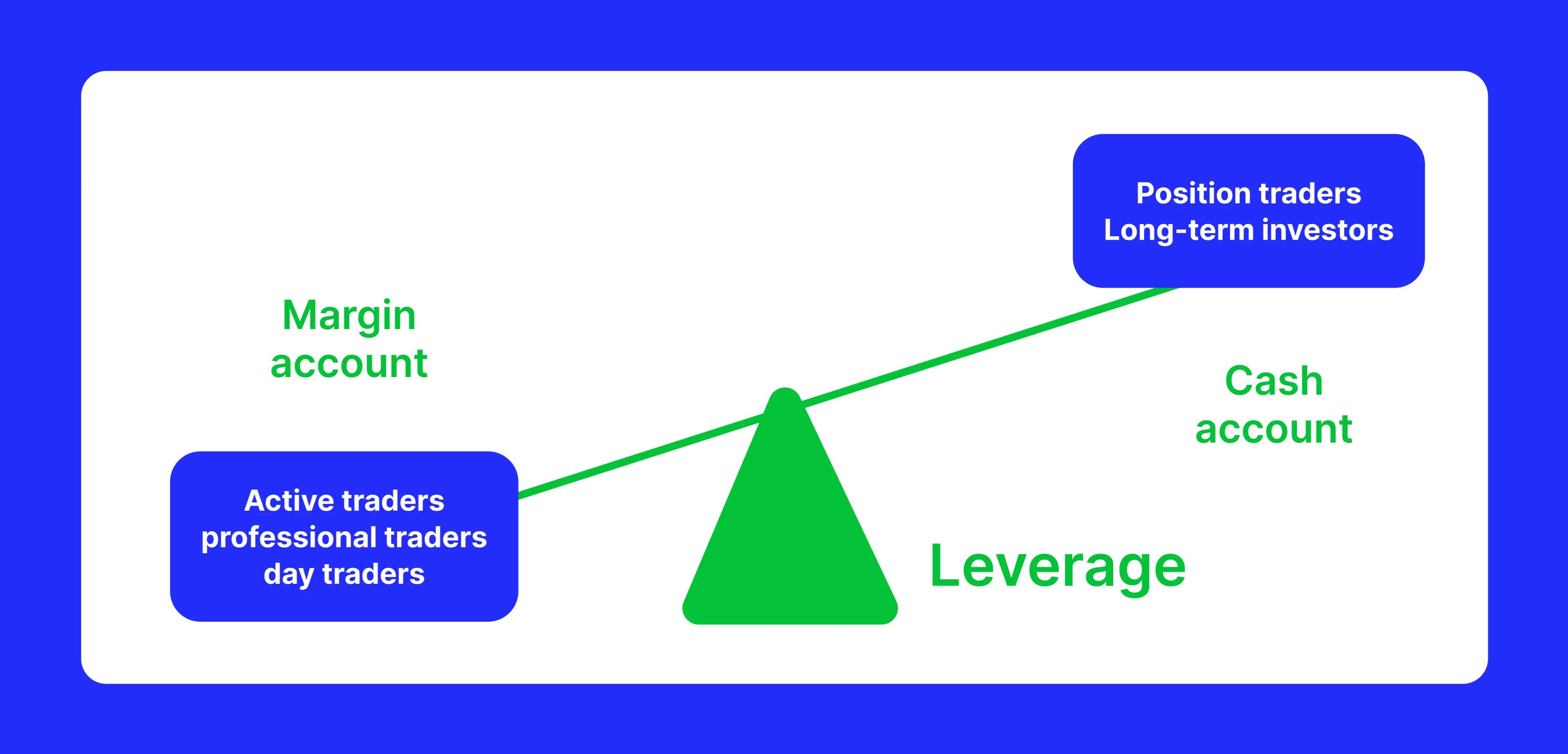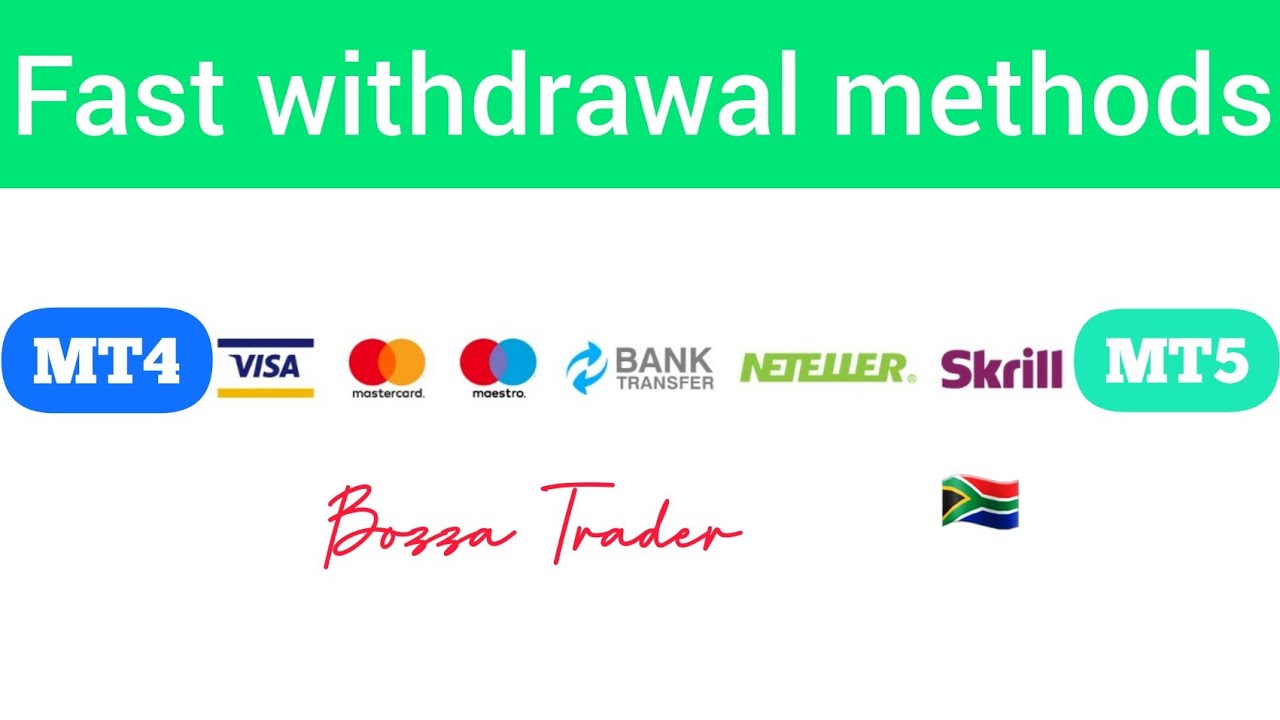Introduction
Welcome to the exciting world of trading accounts! If you’ve ever wondered what a trading account is and why people use them, you’ve come to the right place. In this article, we’ll provide a comprehensive overview of trading accounts and everything you need to know about them.
A trading account is a specialized account that allows individuals to buy and sell various financial instruments, such as stocks, bonds, commodities, and currencies. By utilizing a trading account, investors can participate in the financial markets and potentially generate profits through buying low and selling high.
Trading accounts have gained popularity in recent years due to their accessibility and the potential for high returns. With advancements in technology, trading accounts are no longer exclusively for professional traders or large financial institutions. Now, anyone with an internet connection and a small initial capital can open a trading account and actively trade in the global markets.
So why do people use trading accounts in the first place? The primary reason is the opportunity for financial growth. By effectively managing their investments and making informed trading decisions, individuals can potentially earn substantial profits. Trading accounts also provide a convenient way to diversify one’s investment portfolio, as they offer access to a wide range of financial instruments and markets.
Moreover, trading accounts offer flexibility and control over one’s finances. Unlike traditional savings accounts or investment funds, trading accounts allow users to actively monitor and manage their positions. This ability to react to market conditions in real-time gives traders the freedom to adjust their strategies and potentially capitalize on emerging trends and opportunities.
Before diving deeper into the intricacies of trading accounts, it’s important to understand the key components of a trading account. These components include account balance, margin, leverage, trading platform, and transaction fees. Each of these factors plays a crucial role in the overall trading experience and can significantly impact the profitability of trading activities.
In the following sections, we will explore each of these components in more detail, as well as provide guidance on how to open a trading account, discuss the different types of trading accounts available, and share tips for successful trading. By the end of this article, you’ll have a solid understanding of trading accounts and be well-equipped to embark on your trading journey.
What is a Trading Account?
A trading account is a specialized financial account that allows individuals to buy and sell various financial instruments, such as stocks, bonds, commodities, and currencies. It serves as a gateway to the global financial markets, enabling investors to participate in trading activities and potentially generate profits.
When you open a trading account, you essentially become a participant in the financial markets. You can place orders to buy or sell financial instruments, track your positions, and analyze market trends and data. Trading accounts are typically offered by brokers, banks, and online trading platforms, providing users with access to a wide range of investment opportunities.
Trading accounts are designed to cater to both novice and experienced traders. If you’re new to trading, you can start with a basic trading account that offers user-friendly interfaces, educational resources, and support tools to help you understand the trading process. On the other hand, if you’re a seasoned trader, you can opt for advanced trading accounts that provide advanced charting tools, real-time market data, and customizable trading strategies.
One of the key features of a trading account is the ability to execute trades in real-time. When you spot a trading opportunity, you can quickly place an order to buy or sell a financial instrument. This immediacy allows traders to take advantage of market fluctuations and potentially profit from price movements.
Furthermore, trading accounts offer various order types to suit different trading strategies. Whether you prefer market orders, limit orders, stop orders, or more complex order types like trailing stop orders, a trading account provides the flexibility to execute trades according to your preferred methods.
In addition to executing trades, trading accounts also provide valuable trading tools and features. These can include charting capabilities, technical analysis indicators, news and research updates, and risk management tools. These utilities help traders make informed decisions, analyze market trends, and manage their positions effectively.
It’s important to note that trading accounts involve risks, and it’s crucial to have a solid understanding of the financial instruments you intend to trade, as well as the risks involved. It’s advisable to start with a demo trading account where you can practice trading with virtual funds, allowing you to familiarize yourself with the trading platform and gain experience before venturing into live trading.
Overall, a trading account serves as a window into the financial markets, empowering individuals to participate in trading activities and potentially achieve their financial goals. It facilitates access to a wide range of financial instruments, offers real-time trading capabilities, and provides essential tools and features for successful trading.
Why do people use Trading Accounts?
Trading accounts have become increasingly popular among individuals who are looking to grow their wealth and take control of their financial future. Here are the primary reasons why people use trading accounts:
- Potential for Profit: One of the main reasons people use trading accounts is the opportunity to generate profits. By actively participating in the financial markets, traders aim to buy low and sell high, capitalizing on price movements to make profitable trades. With diligent research, analysis, and a well-executed trading strategy, trading accounts can offer the potential for substantial financial gains.
- Diversification: Trading accounts allow individuals to diversify their investment portfolios. By gaining access to a wide range of financial instruments, traders have the flexibility to invest in different sectors, asset classes, and markets. Diversification helps spread risk and reduces the impact of any single investment on overall portfolio performance, potentially enhancing stability and returns.
- Flexibility and Control: Trading accounts provide traders with the flexibility and control to manage their investments in real-time. Unlike traditional investment options where decisions are made by fund managers or financial institutions, trading accounts allow traders to actively monitor their positions, adjust strategies, and execute trades as they see fit. This level of control empowers individuals to respond to market conditions and adapt their trading approach accordingly.
- Accessibility: Trading accounts have become increasingly accessible to individuals of all backgrounds. In the past, trading was primarily reserved for professionals or those with access to large financial institutions. However, with the advent of online trading platforms and the availability of low-cost trading accounts, anyone with an internet connection can open a trading account and start trading. This accessibility has democratized the world of trading and opened up opportunities for individual investors.
- Educational Opportunities: Many trading accounts offer educational resources, tutorials, and market analysis tools to help traders enhance their knowledge and skills. This educational aspect of trading accounts allows individuals to learn about financial markets, trading strategies, and various investment instruments. The learning process can be ongoing, and traders can continuously upgrade their knowledge to improve their trading proficiency.
While these reasons attract people to trading accounts, it is important to note that trading involves risks. The potential for profit comes hand in hand with the risk of loss. It requires careful planning, risk management, and discipline. It is essential for traders to educate themselves, develop a well-defined strategy, and understand the risks associated with trading before committing their capital.
Overall, people use trading accounts as a means to potentially grow their wealth, diversify their investment portfolios, take control of their financial decisions, and access the exciting world of trading. When used responsibly and with proper education and risk management, trading accounts can be a valuable financial tool for individuals striving for financial independence.
The Components of a Trading Account
When it comes to trading accounts, there are several key components that traders should be familiar with. Understanding these components is essential for effectively managing a trading account and optimizing trading activities. Let’s explore each of these components in more detail:
- Account Balance: The account balance is the amount of funds available in the trading account. It represents the total capital that traders have to utilize for buying and selling financial instruments. Traders need to monitor their account balance closely to ensure they have sufficient funds for entering trades and covering any associated fees or margin requirements.
- Margin: Margin is a portion of the account balance that traders must set aside as collateral when placing trades. It serves as a form of security for brokers or financial institutions in case the trade incurs losses. Margin requirements vary depending on the financial instrument and the trading platform used. It’s important to understand the margin requirements for each trade to avoid margin calls or potential liquidation of positions.
- Leverage: Leverage allows traders to control a larger position in the market with a smaller amount of capital. It amplifies the potential gains or losses of a trade. While leverage can magnify profits, it also increases the risk exposure. It’s crucial to use leverage responsibly and understand the potential implications on risk management.
- Trading Platform: The trading platform is the software or online interface provided by brokers or financial institutions for executing trades. It is the primary tool for accessing market data, placing trades, and managing positions. Trading platforms vary in features, functionality, and user-friendliness. It’s essential for traders to choose a platform that suits their needs, offers real-time data, and provides analytical tools for market analysis.
- Transaction Fees: Trading accounts involve various transaction fees that traders need to consider. These fees may include brokerage commissions, spread (the difference between the bid and ask price), overnight financing charges, and withdrawal fees. Traders should be aware of these fees and factor them into their trading strategies to ensure the profitability of their trades.
Other important components of trading accounts include order types, such as market orders, limit orders, and stop orders, which determine how trades are executed. Risk management tools, such as stop-loss orders or take-profit orders, help traders minimize potential losses or lock in profits. Additionally, trading accounts often provide access to real-time market data, charts, technical indicators, and news updates, allowing traders to analyze market trends and make informed trading decisions.
Understanding these components is crucial for effectively managing trading accounts. Traders should be aware of their account balance, margin requirements, and leverage usage to control risk effectively. Choosing a robust trading platform that provides access to necessary tools and features ensures smooth execution of trades. being informed about transaction fees helps in optimizing trading strategies for profitability. By comprehending these components, traders can make informed decisions and navigate the dynamic world of trading with confidence.
How to Open a Trading Account
If you’re interested in opening a trading account, the process is generally straightforward and can be completed in a few simple steps. Here’s a basic guide on how to open a trading account:
- Choose a Broker or Trading Platform: The first step is to research and select a reputable broker or trading platform that suits your trading needs. Consider factors such as the broker’s regulatory status, available financial instruments, ease of use, customer support, and fees. It’s important to choose a broker that is licensed, regulated, and offers a reliable trading platform.
- Complete the Application Process: Once you’ve selected a broker or trading platform, you’ll need to complete the account application process. This typically involves filling out an online form with personal information, such as your name, contact details, and financial information. You may also be required to provide identification documents, such as a passport or driver’s license, to verify your identity.
- Submit Required Documentation: In addition to personal information, you may need to submit supporting documents, such as proof of address (utility bill or bank statement) and proof of identification, to comply with anti-money laundering (AML) and know your customer (KYC) regulations. These documents help ensure the legitimacy of your account and protect against fraudulent activities.
- Choose Account Type: Next, you’ll need to choose the type of trading account that best aligns with your investment goals and trading preferences. Different brokers offer various account types, such as standard accounts, mini accounts, or premium accounts, each with its own features, minimum deposit requirements, and trading conditions. Consider factors such as minimum account balance, leverage, and available trading platforms when making this decision.
- Account Funding: After your account application is approved, you’ll need to fund your trading account with an initial deposit. The minimum deposit requirement varies depending on the broker and account type. Funding options typically include bank transfers, credit/debit cards, or electronic payment services. Ensure that you choose a secure and convenient payment method that suits your preferences.
- Begin Trading: Once your trading account is funded, you can begin trading. Familiarize yourself with the trading platform provided by your broker and explore the available financial instruments. Take the time to educate yourself about trading strategies, risk management, and market analysis techniques. Start with small trades and gradually increase your exposure as you gain experience and confidence.
Remember that opening a trading account is just the beginning of your trading journey. Continuous learning, practice, and commitment are essential for becoming a successful trader. Stay updated with market news, follow industry experts, develop a solid trading plan, and regularly evaluate and adjust your trading strategies as needed.
It’s important to note that trading involves risk, and there is no guarantee of profit. Only invest what you can afford to lose, and implement risk management strategies, such as using stop-loss orders, to protect your capital. Regularly review your trading activities and evaluate your performance to identify areas for improvement.
By following these steps and maintaining a diligent and disciplined approach, you’ll be well on your way to opening and managing a successful trading account.
Different Types of Trading Accounts
When it comes to trading accounts, there is no one-size-fits-all solution. Different brokers and trading platforms offer a variety of account types to cater to the diverse needs and preferences of traders. Understanding the different types of trading accounts can help you choose the one that aligns best with your trading style and goals. Here are some common types of trading accounts:
- Standard Account: A standard trading account is the most common type and is suitable for traders with average trading volumes. It typically offers competitive spreads, reasonable leverage, and access to a wide range of financial instruments. Standard accounts often require a moderate initial deposit.
- Mini Account: A mini trading account is designed for beginners or traders with limited capital. It allows traders to enter the market with smaller trade sizes and lower initial deposits. Mini accounts usually offer lower leverage and may have slightly wider spreads compared to standard accounts.
- Micro Account: A micro trading account is similar to a mini account but with even smaller trade sizes. It is ideal for traders who want to trade with minimal risk or test trading strategies with small positions. Micro accounts may have higher spreads and lower leverage compared to standard and mini accounts.
- Managed Account: A managed trading account involves having a professional fund manager trade on behalf of the account holder. This type of account is ideal for investors who prefer a hands-off approach or lack the time or expertise to actively trade. Managed accounts require a higher minimum deposit, and the fund manager charges a management fee or a portion of the profits earned.
- Demo Account: A demo trading account, also known as a practice account, is a virtual trading account that allows traders to practice their trading strategies using virtual funds. It is a risk-free environment where traders can learn how to use the trading platform, test trading strategies, and gain experience without risking real money. Demo accounts are valuable learning tools for beginners and experienced traders alike.
Each trading account type has its own advantages and considerations. It’s important to carefully evaluate your trading goals, risk tolerance, and trading budget when choosing a trading account type. Consider factors such as minimum deposit requirements, leverage availability, spread conditions, and additional features or benefits offered by the broker or trading platform.
In addition to the types mentioned above, some brokers may offer specialized trading accounts, such as Islamic accounts that comply with Islamic Shariah law, or VIP accounts with enhanced features and dedicated support for high-volume traders. These specialized account types cater to specific trading requirements and religious considerations.
It’s advisable to research different brokers, compare their account types and features, and read customer reviews to ensure you choose a reputable broker that has a track record of reliable service and a strong regulatory standing. Opening the right type of trading account can significantly impact your trading experience and contribute to your overall success as a trader.
Pros and Cons of Trading Accounts
Trading accounts offer individuals the opportunity to participate in the financial markets and potentially generate profits. However, like any investment vehicle, trading accounts come with both advantages and disadvantages. Understanding the pros and cons can help you make informed decisions when it comes to trading. Let’s examine them:
Pros of Trading Accounts:
- Potential for Profit: One of the main benefits of trading accounts is the potential for generating profits. With careful analysis, proper risk management, and strategic trading decisions, traders have the opportunity to make significant gains in the financial markets.
- Diversification: Trading accounts offer access to a wide range of financial instruments and markets. This allows traders to diversify their portfolios, reducing the risk of relying on a single investment. Diversification can help balance out losses and potentially increase overall returns.
- Flexibility and Control: Trading accounts provide traders with the flexibility to adjust positions, add or reduce exposure to specific assets, and implement their own trading strategies. Traders can actively monitor the markets, react to price movements, and adapt their strategies accordingly, giving them a level of control over their investments.
- Access to Market Opportunities: Trading accounts give individuals the opportunity to access various financial markets, including stocks, bonds, commodities, and currencies. This allows them to take advantage of different market trends, volatility, and trading opportunities across different asset classes.
- Continuous Learning: Engaging in trading activities through a trading account offers continuous learning opportunities. Traders can gain insights into market behavior, refine their trading strategies, and upgrade their knowledge through analyzing data, reading market news, and actively participating in the markets.
Cons of Trading Accounts:
- Risk of Loss: Trading accounts involve inherent risks, and it’s important to understand that losses are possible. Market fluctuations, volatility, and unforeseen events can lead to financial losses, especially if proper risk management techniques are not implemented.
- Emotional Factors: Trading can evoke strong emotions such as fear and greed. Emotional decision-making can lead to poor trading choices, including chasing losses or holding onto losing positions for too long. It’s vital to maintain emotional discipline and stick to a well-defined trading plan.
- Time and Effort: Successful trading requires time, effort, and ongoing commitment. Traders must dedicate time for market research, analysis, and monitoring positions. Developing trading skills and gaining experience takes consistent effort and practice.
- Transaction Costs: Trading accounts involve various transaction costs, including brokerage commissions, spreads, and financing charges. These costs can eat into profits and should be considered when calculating potential gains or losses.
- Market Volatility: Financial markets are subject to periods of high volatility, which can lead to rapid price fluctuations and increased risk. Traders must be prepared for market volatility and have risk mitigation strategies in place.
It’s important to weigh both the pros and cons of trading accounts before engaging in trading activities. While trading accounts offer potential opportunities for profit and financial growth, they also come with risks and require a disciplined approach. By understanding and managing these factors, traders can maximize the benefits while minimizing the downsides of trading accounts.
Tips for Successful Trading with a Trading Account
Trading accounts offer individuals the opportunity to participate in the financial markets and potentially achieve their financial goals. To increase your chances of success, it’s important to approach trading with a well-defined strategy and a disciplined mindset. Here are some tips to help you trade successfully with a trading account:
- Educate Yourself: Knowledge is key in trading. Take the time to educate yourself about the financial markets, different trading strategies, technical analysis, and risk management techniques. Continuously learning and staying updated with market news and trends will help you make informed trading decisions.
- Develop a Trading Plan: A trading plan outlines your trading goals, preferred trading style, risk tolerance, and rules for entering and exiting trades. Having a well-defined trading plan helps you stay focused, avoid impulsive decisions, and maintain consistency in your trading approach.
- Practice with a Demo Account: Before trading with real money, practice with a demo account. Demo accounts allow you to simulate trading with virtual funds, providing a risk-free environment to test your strategies and become familiar with the trading platform.
- Implement Proper Risk Management: Risk management is crucial in trading. Set a risk tolerance level for each trade and use appropriate position sizing to limit potential losses. Implement stop-loss orders to automatically exit losing trades and take-profit orders to lock in profits. Never risk more than you can afford to lose.
- Stay Disciplined: Emotions can cloud judgment and lead to irrational decision-making. Stick to your trading plan and avoid making impulsive trades based on fear or greed. Maintain emotional discipline and avoid chasing losses or holding onto losing positions for too long.
- Understand Market Fundamentals and Technical Analysis: Stay informed about market fundamentals that can impact the financial markets, such as economic data, geopolitical events, and central bank decisions. Additionally, learn technical analysis techniques to identify market trends and patterns that can help you make more accurate trading decisions.
- Diversify Your Portfolio: Diversification is key to managing risk. Spread your investments across different financial instruments, sectors, or asset classes. This helps reduce the impact of any single investment on your overall portfolio and potentially increases stability and returns.
- Continuously Evaluate and Improve: Regularly review your trading performance, identify strengths and weaknesses, and make necessary adjustments to your trading strategy. Keep a trading journal to track your trades, analyze patterns, and learn from past successes and failures.
- Manage Your Expectations: Trading is not a guaranteed way to make quick and easy money. Set realistic expectations and understand that trading involves risk. Focus on consistent, long-term profitability rather than chasing overnight riches.
- Seek Knowledge and Support: Join trading communities, participate in forums, and network with other traders to gain insights and share experiences. Consider learning from mentors or attending trading courses. Surround yourself with supportive and like-minded individuals who can provide guidance and encouragement.
Remember, successful trading requires patience, discipline, continuous learning, adaptability, and the ability to manage emotions. It’s important to be realistic, set achievable goals, and stay committed to your trading plan. By following these tips and developing good trading habits, you can increase your chances of trading success with your trading account.
Conclusion
Trading accounts provide individuals with the opportunity to participate in the dynamic and potentially lucrative world of financial markets. Opening a trading account allows individuals to buy and sell various financial instruments and potentially generate profits based on their trading strategies. While trading accounts offer numerous benefits, it’s important to approach trading with knowledge, discipline, and a well-defined strategy to increase the likelihood of success.
Throughout this article, we have explored the key aspects of trading accounts, including what they are, why people use them, the components that make up a trading account, how to open a trading account, different types of trading accounts, the pros and cons of trading accounts, tips for successful trading, and the importance of continuously learning and evolving as a trader.
When opening a trading account, it is essential to choose a reputable broker or trading platform that aligns with your trading goals and preferences. Carefully consider the account type that suits your needs and ensure you have a solid understanding of the various components of a trading account, such as account balance, margin, leverage, trading platforms, and transaction fees.
Successful trading requires continuous education, the development of a well-defined trading strategy, risk management techniques, and emotional discipline. It is important to stay informed about market fundamentals and technical analysis, continuously evaluate and improve your trading performance, and manage your expectations to avoid unrealistic goals or impulsive decisions.
Trading accounts offer individuals the potential to grow their wealth, diversify their investment portfolios, and take control of their financial future. However, it’s important to remember that trading involves risk, and losses are possible. It is crucial to only invest what you can afford to lose and implement proper risk management strategies.
By following the tips outlined in this article and staying committed to continuous learning and improvement, you can increase your chances of success in trading and make the most of your trading account. Whether you’re a beginner or an experienced trader, the journey of trading is a constant learning process, and with dedication, discipline, and perseverance, you can navigate the financial markets with confidence and potentially achieve your financial goals.







